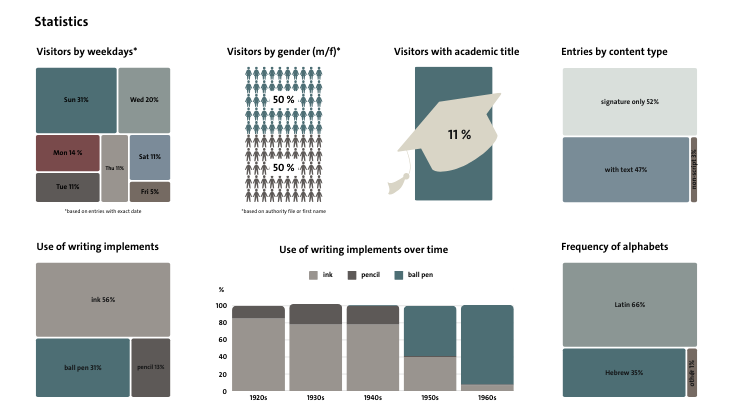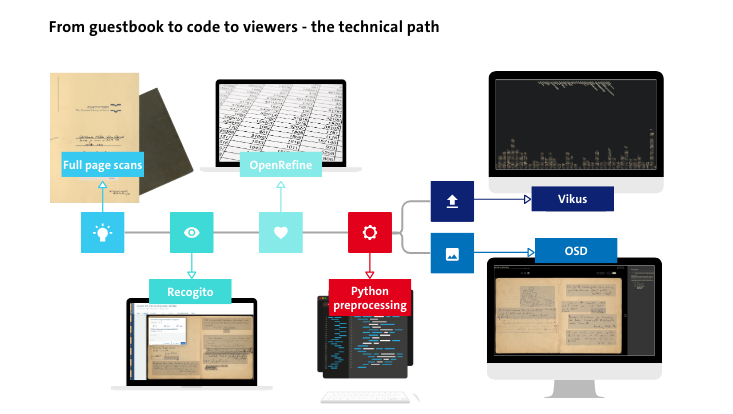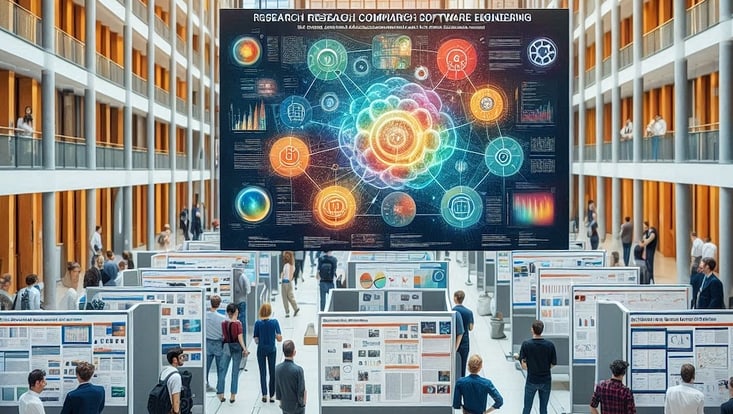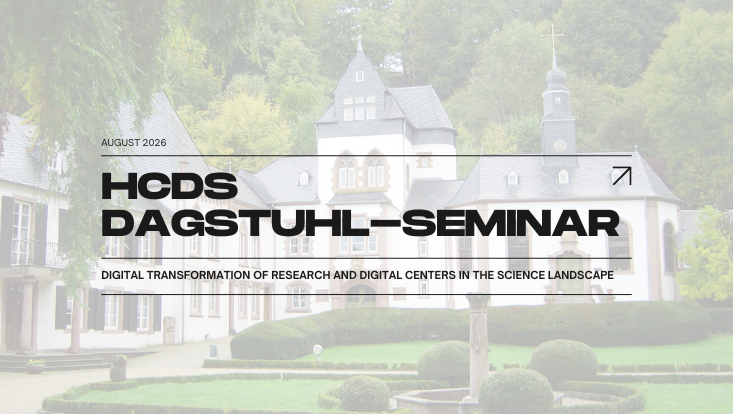& Data Science
Unlocking the Past: CSMC and HCDS Present Digital Insights into the Jerusalem Guestbook
24 January 2025, by Chris Biemann

Photo: Janis-Marie Paul
On 23 January, researchers from the Centre for the Study of Manuscript Cultures (CSMC) and the Hub of Computing and Data Science (HCDS) presented their latest work on the Jerusalem guestbook at a public launch event. In short talks, the team explored how new digital tools enhance research and visualization, uncovering hidden connections and forgotten stories.
The guestbook, kept by Miryam and Moshe Ya’akov Ben-Gavriêl, is more than just a record of visitors—it is a window into the intellectual and cultural exchanges of its time. Entries reveal encounters with figures such as Hitler’s most prominent artistic adversary, the famous uncle of Amos Oz, and even a Nazi who traveled to Palestine. Through digital processing and visualization, these narratives come to life in ways that traditional archival methods cannot achieve.
A New Digital Perspective on Historical Artefacts
Why digitize a guestbook? According to Dr. Sebastian Schirrmeister, one of the leading researchers, this particular artefact was chosen due to its manageable size and intricate network of internal and external references. It serves as an excellent case study to illustrate how digital reproduction opens new avenues for research.
"Working with a digital copy instead of the original means we inevitably lose something—the physical context, the haptic feel of the book," explains Schirrmeister. "We can't quickly flip through the pages or mark sections with our fingers. But digital formats offer other advantages: we can filter by keywords, sort by dates and languages, and even analyze writing instruments used in the entries."

Scaling Up: From a Single Book to an Entire Archive
The success of the Jerusalem guestbook project is just the beginning. Schirrmeister and his colleagues are now setting their sights on a larger challenge: digitizing an entire estate—one of the 24 collections preserved by the National Library of Israel (NLI) and the CSMC. Instead of dealing with 1,200 entries, they will soon be working with thirty times as many images.

Currently, the focus is on testing and refining digital tools to manage such a vast collection. The team is utilizing open-source software, particularly the VIKUS Viewer, developed at the University of Applied Sciences Potsdam. Their goal is not only to adapt existing tools to their specific needs but also to contribute back to the development of digital humanities technologies.
This project exemplifies HCDS’s commitment to computational solutions for humanities research, bridging the gap between traditional scholarship and cutting-edge digital methods. By unlocking historical narratives with AI-driven visualization and crowd-sourced collaboration, the Jerusalem guestbook project is paving the way for a new era in manuscript studies and digital humanities.


